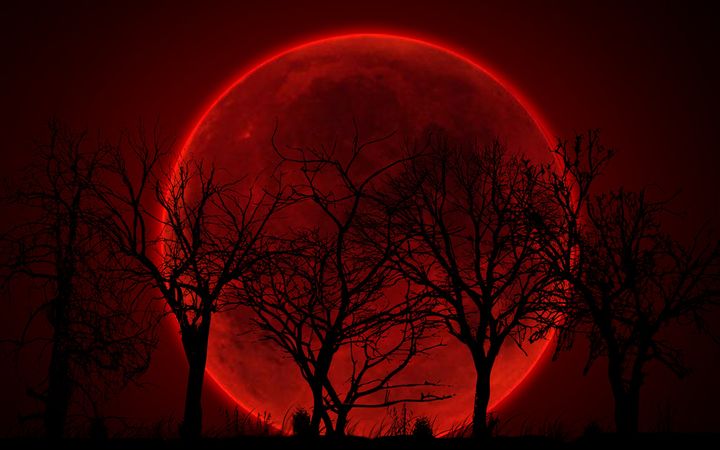Amateur astronomers who missed the previous eclipse cannot help but wonder when the bloody moon will be in 2020 and whether they will be able to observe this phenomenon. Despite the fact that this will not happen in the next few years, in 2019-2020. the inhabitants of some continents will be able to see not only partial lunar, but also solar eclipses. Only most of these phenomena will be difficult to observe without the special equipment used by scientists.
Why does the Earth satellite change color
The moon constantly rotates around the Earth, and it takes at least 27 days for one revolution. However, it also goes through a phase with a cycle length of 29.5 days. And the difference between the data of these two parameters is due to the location of the Earth, the Sun and the Moon relative to each other, and this indicator is not a constant value and changes all the time.
The main condition for a lunar eclipse is the full moon, when the Sun can fully illuminate the surface of the satellite. The full moon itself does not contribute to the appearance of an eclipse: it rotates along a slightly different trajectory than the sun and the earth. But if at some moment the planes of these celestial bodies coincide and line up so that the Earth blocks sunlight, then such a phenomenon as an eclipse can be observed.
You can see both partial and total eclipses. In the first case, the Earth only partially blocks the light from the Sun, and on the surface of the satellite you can see a clear border of the shadow. But a penumbra eclipse can be observed, however, a simple layman who does not have the appropriate technique will not see this (with this phenomenon, the difference is almost elusive and is not visible without magnification).

A total eclipse is a more spectacular phenomenon: the surface of the moon is completely in the shadow that creates the earth. At the same time, sunlight nevertheless reaches its surface, gradually scattering in the atmosphere. Given the fact that the rays of the red spectrum (in contrast to the blue and green spectrum) are much worse scattered, the satellite looks red or even blood red.
The intensity of the color depends on a number of factors, so it is not always possible to predict how spectacular the phenomenon will be. In particular, it is important what cloud cover at the time of the eclipse, how many particles of garbage in the atmosphere and how much it is polluted. As a rule, the most intense bloody Moon in color occurs after volcanic eruptions, and since their dates are not known in advance, we can assume that in 2020 the inhabitants of the Earth should not count on such a phenomenon.
When will the bloody eclipse
At the beginning of 2019, the first eclipse turned out to be an exciting and very spectacular phenomenon: on the night of January 20 to 21 you could see the bloody “wolf” Moon, which very excited believers (they consider this a bad omen, indicating wars and mass deaths). At the same time, the satellite was very close to the Earth (at the closest point of its orbit) and the inhabitants of some continents (primarily North America and Europe) admired not only a bloody, but also a very large moon. The whole process lasted more than 3 hours, although the complete eclipse was observed a little longer than 60 minutes. Prior to this, partial and penumbral eclipses could be seen, which were practically invisible to the naked eye of a simple layman.

If we talk about when the next bloody moon will be, then, according to scientists, in 2020 you should not count on such a spectacle.The maximum that can be seen is penumbral eclipses, which cannot be seen without special equipment. The first of them will happen on January 10, the other two in the summer (with a difference of a month - June 5 and July 5), and the last - November 30.
Given that the key prerequisite for the appearance of the red moon is a total eclipse, it can be assumed that such an event will occur only on May 26, 2021. But even in this case there is no guarantee that from the Earth the lunar surface will appear red, since certain conditions must be created for this. But the probability will be very high if on the threshold of this event large-scale fires or a powerful eruption of the volcano are observed, which will contribute to air pollution.
What a bloody lunar eclipse looked like: video
Read also:




















